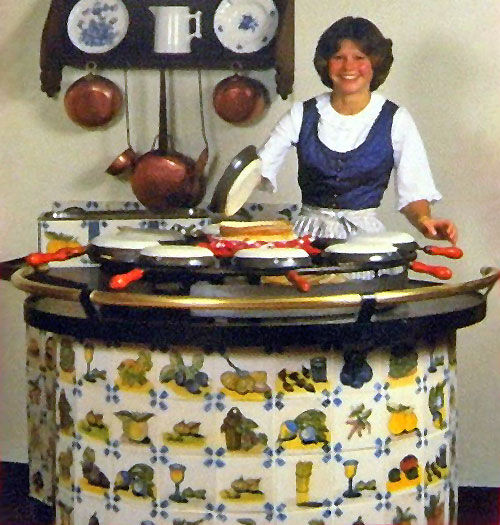Lost Tables | Remembering The Magic Pan
Published April 9, 2021
Ever wondered what happened to that restaurant you once loved and have memories of dining at with your family and friends? We did! There is an amazing website called Lost Tables, dedicated to celebrating the restaurants of our past. We are partnering with the site’s creator Harley Hammerman and celebrating these wonderful stories. Hammerman and his wife Marlene are members of Shaare Emeth, and she is past president of the National Council of Jewish Women of St. Louis. Visit Lost Tables on Facebook
Leslie and Paulette Fono came to the United States from Budapest in 1956, settling in Denver. When they entertained, Paulette would make palacsintas, the Hungarian equivalent of crepes, using many of her mother’s recipes.
“It was our friends who became enthusiastic about the filled pancakes and who encouraged us to open a restaurant and serve some of our specialties,” Leslie recalled.
ADVERTISEMENT
In 1966, the Fonos moved to San Francisco and opened a small restaurant at 3221 Fillmore, near Lombard Street. It seated 24 people and was decorated “just like home in Hungary.”
Paulette made the fillings and Leslie made the crepes. And to make crepes efficiently, Leslie came up with an invention which gave the restaurant its name – The Magic Pan.
The device was a large iron wheel which held eight crepe pans. The pans rotated over gas flames, which heated them from below. When the pans were hot, they were greased on the bottom, dipped into crepe batter and placed upside down on the wheel. After a pan made a complete circuit, the crepe was lifted carefully from its bottom and placed atop a stack in the middle of the table.
ADVERTISEMENT
Crepes were made in full view of diners by a “chef” in a dirndl outfit. One perfectly cooked crepe could be made every minute.
The original Magic Pan menu offered crab crepes, spinach crepes, mushroom crepes, cheese crepes and lobster crepes. The starter was a goulash soup and salad. Desert was strawberry crepes with chocolate sauce.
The Fonos’ creperie was so successful that a year later a second Magic Pan opened at Ghirardelli Square, the onetime chocolate factory turned complex of shops and restaurants. And then in January of 1969 it was announced that the Fonos had sold their restaurants to the Quaker Oats Company, which planned to expand the concept throughout the country. Leslie and Paulette Fono became president and vice president of Magic Pan, Inc.
In January of 1972, the Frontenac Board of Alderman voted to rezone a 68-acre tract of land at the southwest corner of Clayton and Lindbergh, paving the way for the development of a 30-acre “high-fashion” shopping center. The center would consist of two “anchor” stores connected by a two-level mall with small specialty shops.
Plaza Frontenac opened in the fall of 1973 with Saks Fifth Avenue’s ribbon cutting ceremony on November 3. Saks was located at the north end of the mall, at #1 Plaza Frontenac. On November 25, 1974, The Magic Pan opened next door at #2.
The St. Louis Magic Pan was an instant success. In the February 5, 1975 St. Louis Post-Dispatch food critic Joe Pollack gave the creperie a rave review.
A recent, and sparkling bright, addition to the St. Louis luncheon, dining and late-evening scene, The Magic Pan is located in the new Plaza Frontenac shopping center at Lindbergh Boulevard and Clayton Road. It is a branch of an operation that began in San Francisco and has spread to other cities, and there seems to be a strong and admirable thread of consistency running through the chain.
The menu is based on crepes, a thin, light pancake that is rolled, then stuffed and covered with a wide variety of fillings and sauces.
The ones at the Pan may not match the quality of real hand-made crepes at a great French restaurant, but they still are good.
Crepes for dinner, followed by crepes for dessert, may seem rather redundant; but the Pan has sufficient imagination to make the combination delightful, and also rich and filling.
The crepes are prepared in the dining room on a device called, of course, a Magic Pan, and it’s almost as fun to watch them being made as it is to devour them.
To read the entire article about the Magic Pan, visit Lost Tables online.















